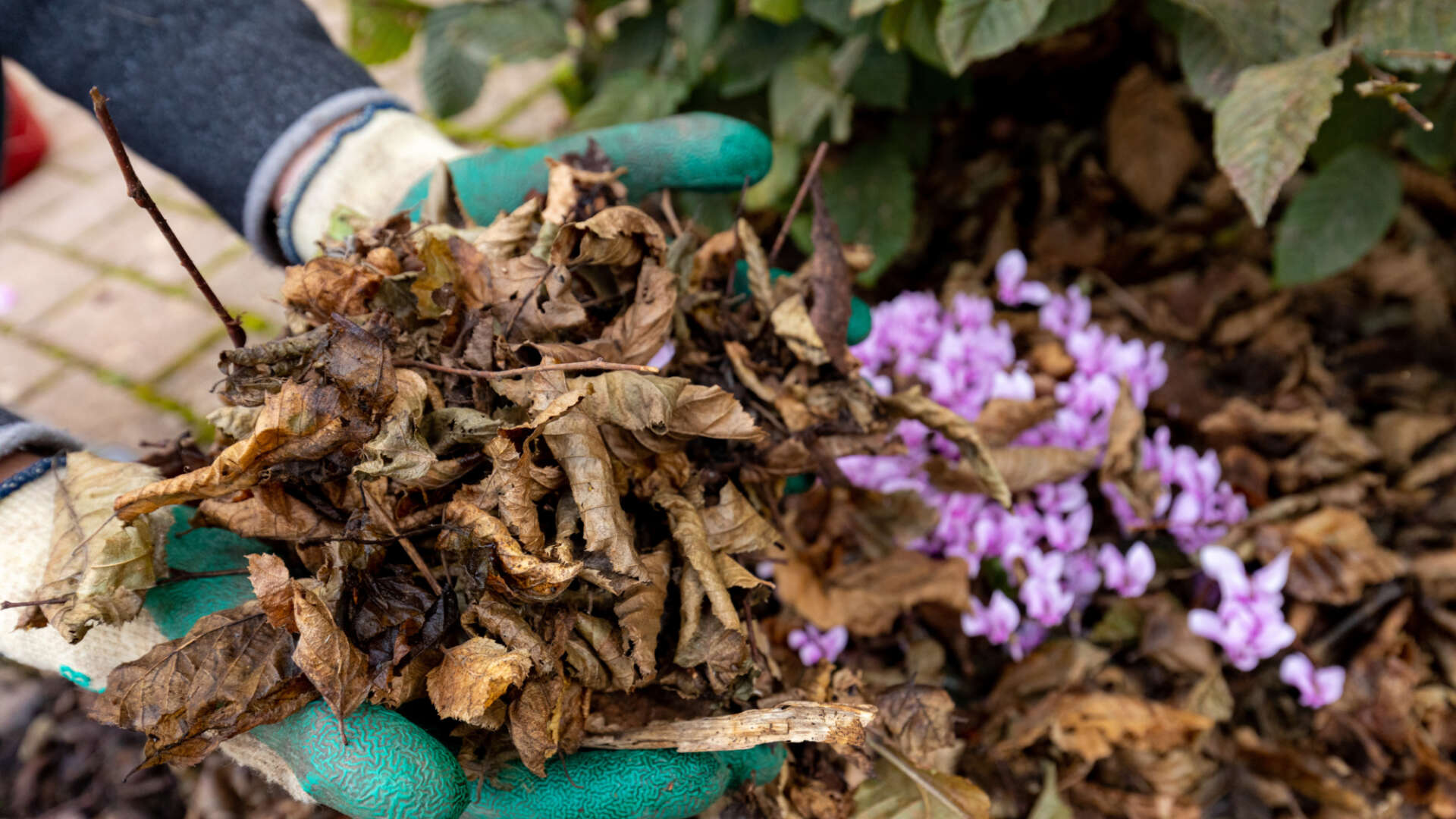Composting
Composting hints and tips

Can I compost autumn leaves?
These can be added to your compost heap but the best use of them is to make leafmould. Stuff wet leaves into black plastic sacks (loosely tied), or an open wire mesh container. The resulting leafmould is ready to use after a year or two.
How do I compost grass mowings?
Mix well with browns to avoid a slimy mess. Alternatively, leave them on the lawn whenever possible - they will soon disappear and feed the grass; this will not cause 'thatch'. Can also be mixed into a leafmould heap, or used directly as a soil mulch.
Can I compost diseased plants?
Plant materials suffering from soil-borne diseases such as clubroot and white rot should not be added to a compost heap. Anything else can be safely composted in a hot heap. Diseases that don’t need living matter to survive, such as grey mould, mildews, and wilts, may survive in a cold heap.
But heat is not the only factor that will kill diseases: the intense microbial activity in a compost heap also helps to dispose of them. Some diseases, such as tomato and potato blight need living plant tissue to survive and will not last long without it. It is fine to add foliage suffering from these diseases to your hot or cold compost heap. If in doubt, leave it out. Problem materials can be sent to your local council green waste recycling facility where the composting methods are hot enough to kill any problem organisms.
that don't need living plants to survive - grey mould, mildews, wilts - may survive in a slow, cool heap. But heat is not the only factor that will kill diseases - the intense microbial activity will also help to dispose of them.
Can i compost perennial weeds or weed seeds?
Some perennial weeds will be killed in a hot heap; avoid really persistent horrors such as celandine, docks, bulbous buttercup, ground elder and bindweed. Don't burn or dump these weeds - they are rich in plant foods. Mix with grass mowings in a plastic sack. Tie it up and leave for a few months until the weeds are no longer recognisable, then add it to the compost heap. Or send them to your local council green waste recycling facility where the composting methods are hot enough to kill them off.
Weed seeds may survive a cool heap, but should be killed in a hot one. If your compost tends to grow weeds, dig it in rather than spread it on the soil surface.
How do I compost hedge trimmings?
Chop or shred tough prunings and clippings from evergreen hedges before adding to a mixed compost heap. Compost large quantities separately; even unshredded they will compost eventually. Mix with grass or other activating material; water well. Tread down the heap, then cover. In anything from a few months to a few years, you will have a coarse mulch which can be used on perennial beds.
What animal manure can I compost?
Strawy horse and cattle manure composts well. Manure mixed with wood shavings should be left to rot until the shavings have decomposed. If it is dry, water well and mix with grass mowings, poultry manure or other activating (ie ‘green’ or nitrogen-rich) material. When rotted use as a surface mulch.
Small pets, like hamsters, don't produce many droppings but you can still use their waste as a strawy addition to the compost heap. Guinea pigs are marvellous - they love eating weeds and convert them quickly to prime compost material!
Avoid composting cat or dog faeces as they can release toxins into your compost. Also, avoid cat litter unless wood-based. See sawdust and wood shavings below.
Can i compost paper?
Newspaper can be added to a compost heap, but in any quantity it should go for recycling into more paper. Cardboard, paper towels and other paper items can be scrunched up and composted. They are particularly useful where kitchen scraps make up a high proportion of the compost ingredients. Glossy paper takes a long time to rot down. Coloured inks are quite safe to compost.
Is sawdust compostable?
Very slow to decay. Raw or uncomposted wood shavings incorporated into the soil can lock up soil nitrogen, making it unavailable for plants for a year or more. Add in small quantities; balance with quick-to-rot activating materials. See also 'Animal manures' above. Do not use if treated with wood preservatives.
Join Garden Organic!
By becoming a Garden Organic member you can join thousands of people who are already leading the movement for an organic and sustainable future for us all. And get great member benefits!
Join today